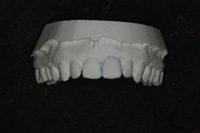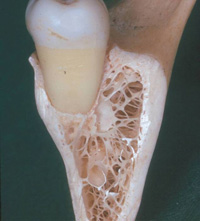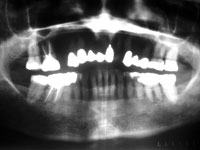In past articles in Dentistry Today I have covered a common sense approach to making financial arrangements with patients. The main thrust of those articles is that all financial arrangements are made prior to the beginning of any treatment, while showing patients how they can afford their dental treatment. What I did not write about previously is how we manage the patient’s dental insurance in relation to the entire financial arrangement scheme. I have received numerous requests from readers to talk about a common sense based approach to handling a patient’s dental insurance, and that will be the topic of this article.
There is always a debate as to whether the dental office should accept insurance assignment or not. I am a big believer in success, and whatever works for you is just fine. In our office, we have chosen to accept insurance assignment. The reason for this is basically good old competition. Most of the dentists in our area do accept insurance assignment, and it is a service that we provide to patients. Patients generally have three main objections to dental treatment —time, pain, and money. I would venture to say that for many people money is the main obstacle. For that reason, accepting insurance assignment is beneficial because the patient does not have to pay as much out-of-pocket to our office, and they feel we are providing added value to them.
Accepting insurance assignment by no means affects our treatment plan for the patient. We exam and diagnosis the patient as if the insurance does not exist. Our suggestions for treatment are based on the patient’s needs and wants regardless of the dental insurance. We will then work with the patient to structure a plan that ensures they get the treatment that they need in the way that is affordable for them. We investigate the patient’s dental insurance and figure that into the total package of treatment costs, and eventually the out-of-pocket expense to the patient.
When a patient initially calls our office to make an appointment, our office manager, in her initial phone interview with the patient, will casually ask if they have any dental insurance. If they do have insurance, the office manager will politely ask for the insurance information so we can verify the insurance plan and benefits prior to the patient’s appointment. This step alone is extremely important. If we are able to verify the patient’s insurance before they come in, then on the day they come in for their appointment when we can actually get started with treatment if the need arises. This also tells the patient that we take their financial needs seriously and that we will work with them to maximize their benefits so they can get the dental treatment they want.
If you ask a patient what their insurance covers, I would bet that eight out of ten patients would answer, “Everything.” Most patients have absolutely no idea what their dental insurance covers, that there are percentages or fee schedules involved, and that there are exclusions. This short, initial conversation about the patient’s dental insurance lets them know that while they may have insurance benefits coming to them, it certainly will not cover “Everything.”
Once the office manager has the dental insurance information from the patient, she will call the insurance company to verify the patient’s benefits. The importance of this call should not be underestimated. The office manager uses the following checklist to find out more about the patient’s dental insurance:
- Subscriber name and social security number.
- Insurance company name, address, and phone number, and the name of the insurance representative to whom you spoke
- Employer name and group number
- Maximum benefits
- Calendar year or benefit year
- How much has been used to date
- Deductible amount, family deductibles, and has deductible been met
- Any waiting periods
- Missing tooth exclusions
- Date of eligibility
- Is reimbursement based on usual, customary and reasonable (UCR) fees, or fee schedule?
- Break down of benefits in percentages:
Class I — Preventative
Class II — Restorative
Class III — Major
- In which class are endodontics, periodontics, and oral surgery?
- Are night guards, occlusal adjustments, frenectomies, bone grafts, and implants covered?
- Frequencies — Are exams, prophys, and bitewings allowed two times per calendar year or 6 months to the date? Is fluoride treatment covered once or twice per year, and is there an age limit?
In our office this checklist has been developed over the years, and we find that this will, in a nutshell, give us some very good ideas as to what the patient’s insurance is going to pay. Generally speaking, once you get through to an insurance representative, you can have all this information in less than five minutes. Unfortunately, occasionally you will get an insurance clerk on the phone who really has no clue as to what they are talking about. Our advice is to politely finish the conversation and call back until you are satisfied that the person on the other end of the phone knows the plan, or ask for a supervisor for clarification. We also make this call even if we know the insurance plan very well. The reason for this is we want to make sure the patient does in fact have this dental insurance. You may also find out from time to time that there may be subtle changes that have been made to the dental insurance plan.
Over the years of utilizing this system, some of our office managers have become very friendly with the insurance administrators with whom they may speak several times per week. This obviously can work in your favor. Having good relationships with the insurance administrators means they sometimes will go the extra mile for you in working out a disputed claim or helping your office receive faster payment. Another important point is to always be friendly on the phone to any representative of a dental insurance company. Dental insurance clerks are human beings too, and if you don’t treat them with respect, they can end up making your life more difficult.
If we already have a treatment plan for a patient, then the office manager will ask the dental insurance clerk specific questions related to that treatment plan. For example, if we know the patient is going to need a crown, she may ask the insurance representative certain questions relating to the particular treatment.
Once our office manager has in hand the treatment plan that I have given her, along with the insurance information, she can then prepare an estimate, or what we call an in-office predetermination. It will break down our fees, expected insurance, and the out-of-pocket expense to the patient. At this point we generally underestimate the amount the dental insurance company is going to pay. We do this for a number of reasons. First of all, many times dental insurance companies will use a UCR fee that is below our current fee, even though we know our fees are well within the UCR range for our area. Secondly, the insurance company may deny certain items in the treatment plan that will lower their payment. As you and I both know, there are a myriad of other reasons that the insurance company will not pay the full percentage of the treatment plan. By underestimating the amount the insurance company will pay by approximately 10%, we are then prepared for any of these situations. In this way, if the insurance company pays more than what is on our estimate, then both we and the insurance company look good in the eyes of the patient. The patient always pays the out-of-pocket expense by the time treatment is finished even though in most cases the insurance company hasn’t yet paid their portion.
Our in-office predetermination system for the patient comes with the statement on the bottom of the form, noting, “This is only an estimate of your insurance benefits. You are ultimately responsible for the entire fee. Any insurance appeals need to be handled directly between you and the insurance company.”
In cases where the insurance company has really paid what they are supposed to and the patient has paid their portion, a refund will be due to the patient. We will then send a refund check to the patient at the end of the month. Patients love getting refund checks — they feel as if they have won the lottery. Patients usually receive bills or other notices from the average medical or dental office and are pleased to open an envelope from us and find a nice surprise. We love sending refund checks to patients because everybody ends up happy — the patient feels it is “found money,” and we feel good because we know our full fee was paid on this case.
We rarely send predeterminations, also called pre-authorizations, to an insurance company. We only do them when the patient requests a predetermination or if the insurance company is adamant that services must be predetermined before payment will be made. Generally, pre-authorizations sent to an insurance company are not beneficial to the dental practice because they make the patients wait for treatment. We have all had the experience that the longer a patient waits to get into treatment, the less chance that they will go ahead with treatment. The insurance companies know this too, which is why they always suggest predeterminations or pre-authorizations. Neither is a guarantee of payment, but is just an estimate of what the insurance company may pay. This is clearly stated on the forms you get from the dental insurance company. Because of this, we prefer to use our system of in-office predeterminations, which most of the time is just as accurate as what you would get from the insurance company.
What if the dental insurance company doesn’t pay like they are supposed to? As a courtesy to the patient, we will work with the insurance company to find out what the reasons for nonpayment are. Many times they are fairly simple and easily corrected. Sometimes, however, some of these claims can turn into a long, drawn-out process. Thankfully, these are few and far between. Many times we will give the patient all the information they need to appeal the claim. We also suggest to patients that instead of dealing directly with the insurance company, the patient should deal with their company’s human resource department. Human resource staff are generally very helpful and will take up the patient’s claim with the insurance company. Insurance company representatives are much more likely to listen and settle a claim that is being brought to them by the patient’s company human resource department than they are from the dental office. Frankly, the company that the patient works for is the dental insurance consumer, and they don’t need the headache of dealing with a dental insurance company that denies most of their employees’ claims. We have seen from past experience in our office that dental insurance claims that have been repeatedly denied by an insurance company for months are then settled within a couple of days once the company’s human resource department handled it.
CONCLUSION
Working with dental insurance can be a challenging experience. Using good common sense and an easy-to-use system can make handling the patient’s insurance predictable and rewarding, both for the patient and for your practice.
Dr. Malcmacher maintains a general and cosmetic private practice in Cleveland, Ohio. He is a researcher and consultant with Dentique, Inc, a dental product and management consulting firm. Dr. Malcmacher is a frequent contributor to the dental literature, an evaluator for Clinical Research Associates, a visiting lecturer at New York University School of Dentistry, and has served as a spokesperson for the Academy of General Dentistry. He is a consultant to the Council on Dental Practice of the American Dental Association. He can be reached at 27239 Wolf Road, Bay Village, OH 44140; (440) 892-1810; or dryowza@iname.com.











